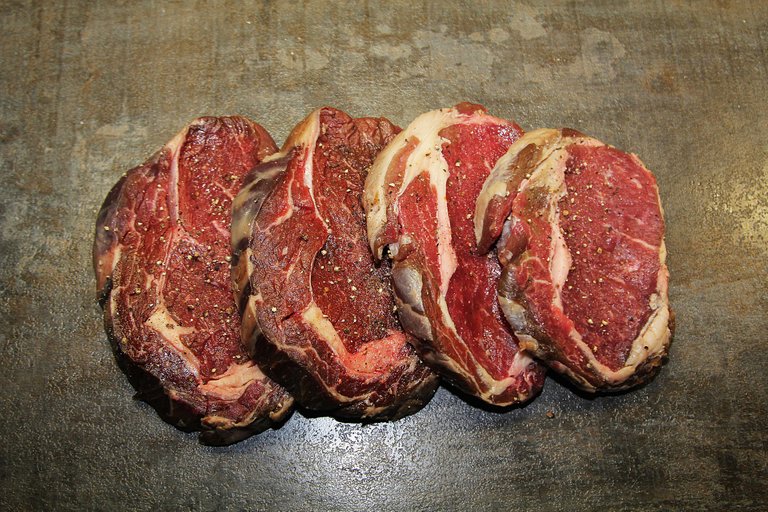3D-Printed Rib-Eye Steaks
Lab-made steaks are coming as bioengineers from Aleph Farms and Technion 3D bio-printed close to lifelike rib-eye steaks.

Image by Reinhard Thrainer from Pixabay
- Be also sure to check out my other posts and follow me @kralizec and subscribe to my Youtube channel at Kralizec Gaming Youtube Channel
Technologies that provide us with meat without the need to have animals are coming whether you like it or not. An Israeli start-up that is working with the Israel Institute of Technology achieved a cool success in this field as they were the first to make a rib-eye steak.
Rib-eye steaks come from the top sirloin – the front part of the back of cows. An “eye made of fat” is typical for it and it also gave it its name. It’s one of the best parts of beef and sometimes rib-eye steaks are claimed to be the kings of steaks.
The company Aleph Farms used 3D bio-printing technology alongside the elementary building blocks of meat – real cow muscle tissue – to create the artificial steak. Currently, Aleph Farms are capable of creating almost any type of steak and in the future, they would also like to enhance their portfolio with other quality meat products.
In this case, 3D bio-printing works with living cells that do further multiply, grow, and interact creating a tissue very close to natural rib-eye steaks. A system similar to a vascular system from natural tissue brings nutrients to the individual cells.
As Didier Toubia – the CEO of Aleph Farms – says their breakthrough 3D printed rib-eye steak is almost an artistic expression of the scientific experiences of his team of scientists. Their goal was to satisfy the taste of clients that want larger and fatter cuts of meat. On top of that, the research and development of 3D printed rib-eye steaks are also part of the effort to shift global food production towards more sustainable technologies.
Co-founder and chief scientist Shulamit Levenbert is considered to be one of the world’s leaders in applied tissue engineering so we can be pretty safe trusting her claims about the 3D printed rib-eye’s quality. What needs to be done now is to get the lab-made meat to customers.
Sources:
- If you like the content I’m producing about science maybe you will like the content I produce about gaming as well! Be sure to check out my other posts!
Interesting but where does the meat come from that is used for 3D printing?
Stem cells? No idea but it would be epic if we can remove the inefficient process of having billions of animals.
Vegan isn't a option for me handle carbs especially grains and beans poorly.
Stem cells are one of the options if I remember correctly. I think there's another one in which you just have a few regular animals and take parts of their muscle tissue and have it grow continuously.
Congrats, you were upvoted from this account because you were in Top 25 engagers yesterday on STEMGeeks .
You made a total of 1 comments and talked to 1 different authors .
For more details about this project please read here - link to announcement post
You can also delegate and get weekly payouts.
At the same time, scientists are working on creating technologies that would grow protein cells in a laboratory as essentially giant "tumors" that continually grow.
The benefit of that is that we would only use nutrients to get the proteins without wasting them on parts of the animal we do not utilize.
Wow! This is amazing! So, in reading through the link articles, they actually grow the meat from cells from a healthy, living cow and the print the steak using that grown material. As they say, the possibilities are endless. I wonder how long it takes to make each one? Is it possible that in the not-so-distant future we could be going to a restaurant and ordering from a menu that creates our selection on the spot? That would be nuts! Thanks for sharing this. I would never have heard about this this anywhere else....
@tipu curate 2 :)